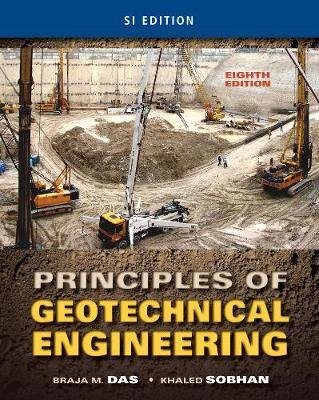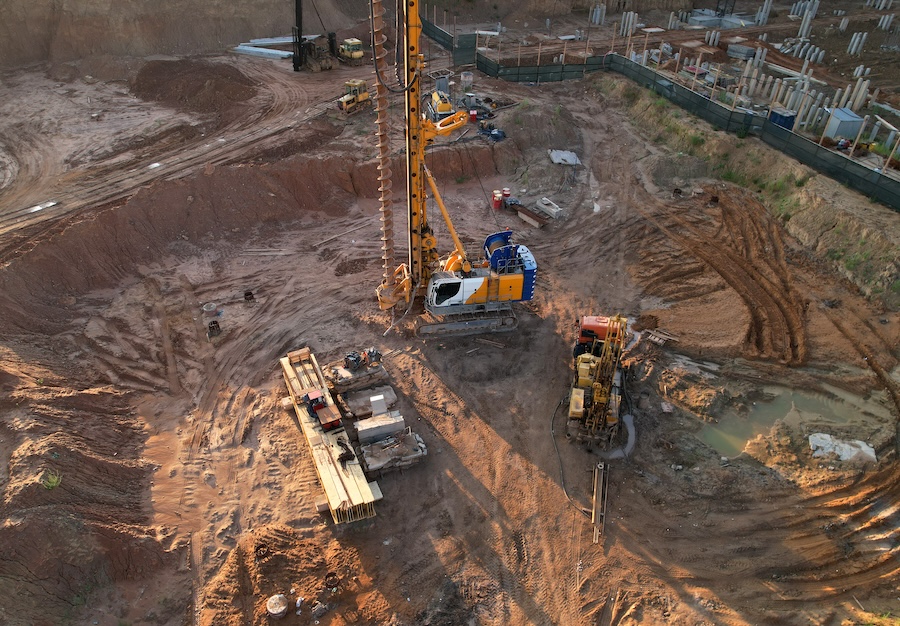Discovering the very best Geotechnical Companies in South Africa: Secret Considerations
Wiki Article
Checking Out the Fundamental Concepts and Applications of Geotechnical Engineering for Sustainable Infrastructure Development
The intersection of geotechnical engineering and sustainable framework development offers an engaging possibility to boost both style efficacy and environmental duty. By recognizing essential principles such as dirt auto mechanics, site characterization, and structure layout methods, engineers can produce solutions that are not only reliable however additionally reduce eco-friendly footprints.Secret Concepts of Geotechnical Engineering
Comprehending the key principles of geotechnical design is necessary for designing lasting framework (geotechnical engineer description). This self-control concentrates on the interaction in between soil, rock, and structures, playing a vital role in the security and efficiency of engineering projects. The primary concept is the assessment of subsurface conditions through site examinations, which give valuable information regarding soil residential or commercial properties, stratification, and groundwater degreesOne more important concept is the application of reliable tension theory, which aids designers understand just how dirt habits modifications under varying tons. This understanding is essential for evaluating the bearing ability of foundations and ensuring that frameworks can withstand both dynamic and static forces.
In addition, the concepts of soil-structure communication and slope stability are indispensable to geotechnical design, as they notify decisions on the placement and style of keeping slopes, embankments, and wall surfaces.
Lastly, geotechnical engineers have to consider sustainability by promoting using locally sourced materials, lessening ecological impact, and enhancing designs for longevity. By adhering to these principles, geotechnical design adds substantially to the production of lasting and resistant framework that fulfills the needs of society while protecting the atmosphere.
Soil Mechanics and Its Importance
Soil auto mechanics works as the foundation of geotechnical design, giving the clinical principles needed to assess the actions of dirt under numerous problems. Recognizing soil auto mechanics is important for predicting how soil will certainly respond to tons, adjustments in moisture content, and various other ecological elements. This understanding enables designers to make frameworks that can endure the pressures applied by the dirt and ensure security and security.The research of soil auto mechanics includes numerous facets, including dirt classification, shear toughness, compressibility, and permeability. These variables influence the style of structures, maintaining walls, and various other geotechnical frameworks, making it important to assess dirt residential properties precisely. For example, the shear strength of soil directly affects the security of excavations and slopes, while compressibility influences negotiation predictions for buildings.
Moreover, soil auto mechanics plays an essential role in sustainable facilities growth. By comprehending the dirt's actions, engineers can lessen ecological effects, optimize material usage, and boost the durability of frameworks. This integration of soil technicians into geotechnical design methods not only ensures security yet likewise adds to the overall sustainability of building and construction tasks, advertising effective source monitoring and environmental stewardship.
Website Characterization Methods
Effective website characterization strategies are crucial for gathering vital details regarding subsurface problems prior to construction - about geotechnical engineering. These techniques give important insights into soil homes, rock developments, groundwater degrees, and YOURURL.com prospective geohazards, therefore informing job style and mitigating dangersOne extensively employed approach is piercing, which allows for direct sampling of dirt and rock layers. This can be enhanced by in-situ screening, such as Standard Penetration Tests (SPT) and Cone Penetration Examinations (CPT), to review dirt toughness and stratification. Geophysical methods, consisting of seismic refraction and electric resistivity surveys, allow non-invasive assessment of subsurface materials and frameworks, offering a more comprehensive perspective on geological problems.
Moreover, research laboratory testing plays an essential role in examining soil samples gotten from drilling. Examinations such as grain dimension evaluation, Atterberg limits, and triaxial shear tests produce important information on soil actions under different loading problems.
Integrating these site characterization methods not only improves the understanding of site conditions however also sustains sustainable facilities growth by ensuring that tasks are developed with ideal security margins and efficiency requirements. Therefore, a thorough website characterization is indispensable for informed decision-making in geotechnical design.
Structure Layout Techniques
Structure style techniques are important for guaranteeing the stability and longevity of structures in different geotechnical contexts. These methods start with a comprehensive site investigation, that includes dirt screening and evaluation to determine the physical homes of the subsoil. Understanding dirt habits under lots is important for choosing the suitable foundation kind, whether shallow or deep.Superficial structures, such as spread footings or floor covering structures, are typically employed when suitable dirt layers are available near the surface. These foundations distribute loads over a bigger location, minimizing the threat of excessive settlement. Alternatively, deep structures, such as piles or drilled shafts, are utilized in circumstances where surface area soils are poor to sustain structural lots. They move lots to deeper, much more secure soil or rock layers.

Sustainable Practices in Geotechnical Engineering
The integration of lasting methods in geotechnical engineering plays a critical role in enhancing the financial and ecological feasibility of framework tasks. By prioritizing source performance and minimizing ecological effects, designers can add to the advancement of resistant framework systems.One key sustainable practice involves the use of alternative products, such as recycled accumulations and industrial by-products, which can decrease the demand for virgin sources and lower carbon emissions. In addition, soil stablizing techniques, consisting of the application of bioengineering methods, enhance dirt homes while promoting environmental equilibrium.
Additionally, the implementation of innovative geotechnical modeling and monitoring innovations allows for much better forecast and administration of ground problems, leading to maximized design solutions and source usage. These technologies additionally promote the evaluation of long-term efficiency, guaranteeing that frameworks remain secure and functional over their lifespan.

Conclusion
In conclusion, the concepts and applications of geotechnical engineering play an essential role in lasting infrastructure advancement. Stressing soil auto mechanics, website characterization, and innovative structure design approaches enhances the durability and performance of structures.By recognizing key concepts such as soil auto mechanics, site characterization, and structure design techniques, engineers can create remedies that are not only effective yet additionally minimize environmental footprints.Dirt auto mechanics offers as the structure of geotechnical engineering, offering the scientific principles required to assess the behavior of dirt under numerous problems. Recognizing dirt technicians is vital for anticipating exactly how soil will respond to loads, changes in moisture web content, and various other ecological aspects.The research of dirt auto mechanics includes various aspects, consisting of dirt category, shear toughness, compressibility, and leaks in the structure. These aspects affect the design of foundations, maintaining wall surfaces, and other geotechnical structures, making it vital to evaluate soil properties properly.
Report this wiki page